How to Draw a Train With Boxcars on Tracks Easy
Model a boxcar storage scene to add realism to a model train layout.
I'grand a fan of shortline railroads. One of the many things I admire about these operations is how resourceful they are. I came across an case of this when I visited Twin Cities & Western (TCWR) subsidiary Sisseton Milbank Railroad (SMRR) in South Dakota in March 2019.
The SMRR is a 38-mile erstwhile Milwaukee Road line that operates betwixt its namesakes in the northeast corner of the country. Sitting on the ground due east of the engine firm at Milbank is an insulated, forty-foot Milwaukee Road boxcar (no. 10473) existence used a maintenance-of-way supply shed.
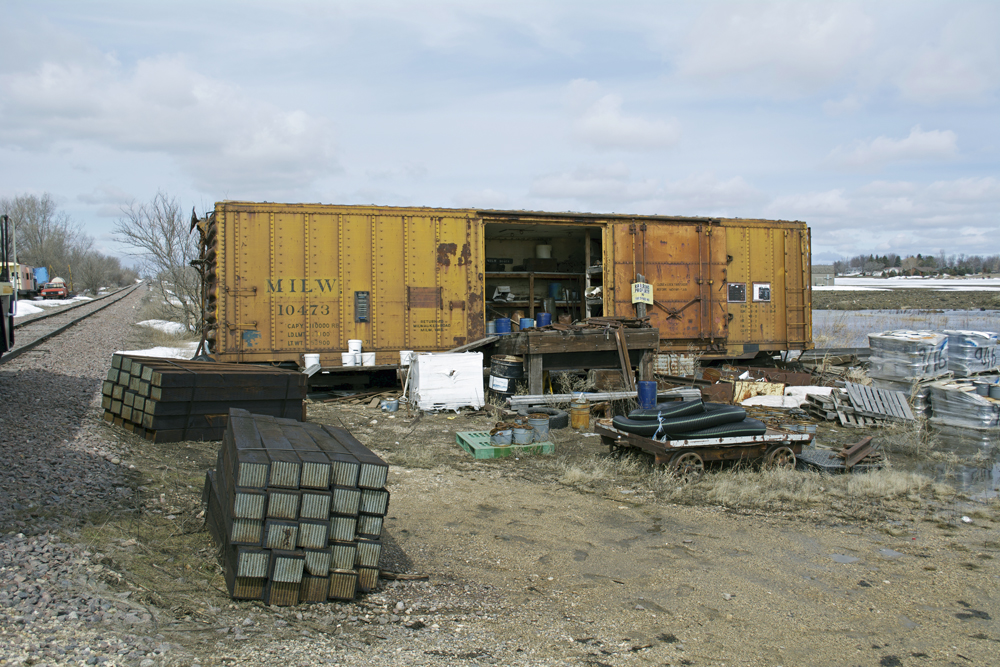
The boxcar used for inspiration
The boxcar has led quite the life. No. 10473 was congenital in February 1951 equally an ice bunker fridge car that the Milwaukee Road leased from Union Refrigerator Transit Co. (URTX). Sometime between 1960 and 1965 it was rebuilt into an insulated boxcar at the Milwaukee Shops, shedding its ice bunkers and rooftop hatches and gaining 10-foot plug doors. During the rebuild the car was repainted orange with black ends and a large Milwaukee Road herald. The outline of that herald is still visible on the left side of the machine.
Doug Nighswonger's Milwaukee Road Colour Guide to Freight and Passenger Equipment Vol. 2 (Morning Sun Books Inc., 2000) indicates the 10473 is from the URTX 10297 through 10493 series. His book notes that some cars from this series were upgraded and repainted into the simplified scheme worn by the 10473 in the early on 1970s. The reweigh stencil on the car reads "MS iv-71" (Milwaukee Shops, April 1971), near likely when the 10473 was repainted. The URTX reporting marks started to be replaced with MILW marks in 1975. A lot more to this motorcar than meets the heart, eh?
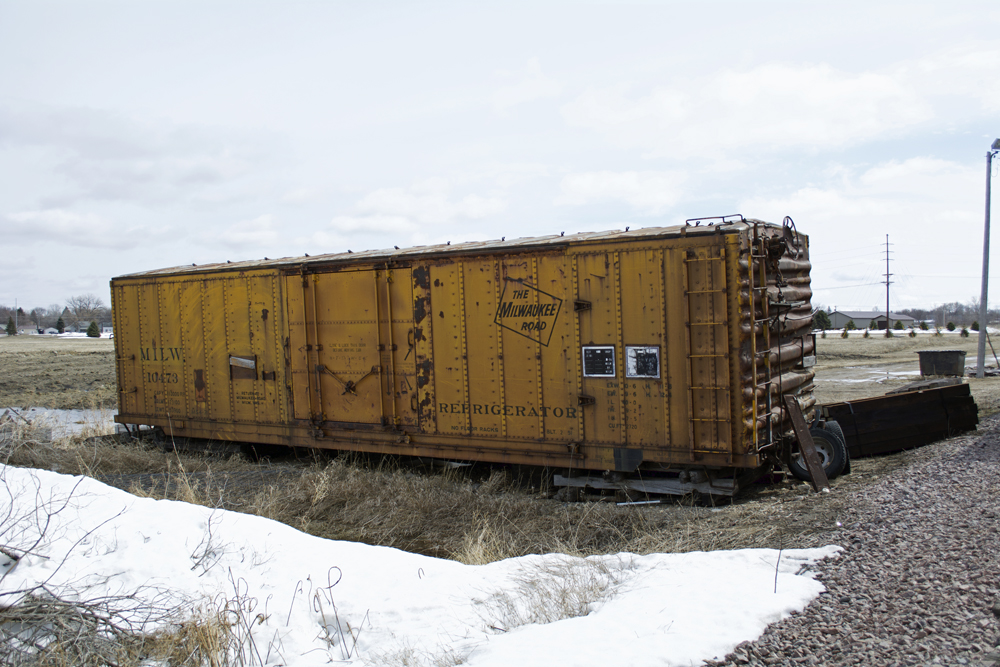
Starting to model the boxcar scene
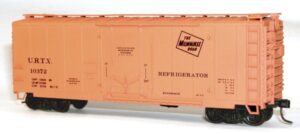
To model a boxcar storage scene, with 10473 as my muse, I'd start with Accurail HO scale 40-foot plug-door boxcar no. 3114. The kit is sold out at the manufacturer, but it might be available at hobby shops, swap meets, or cyberspace auction websites. The motorcar isn't an verbal match for the prototype, just the paint scheme is the closest off-the-shelf option I could find.
Y'all could utilize the car as-is or brand it a bit closer to the image by removing the running board casting (using the mounting pins to plug the holes in the roof!). If you desire to modify the reporting marks and route number, bank check out Microscale decal set up no. 87-514. Painting the interior white would further add to the realism.
The carbody rests on a appropriation of old railroad ties. Equally all-time every bit I could tell, it's 4 layers high. This would exist like shooting fish in a barrel to replicate with commercial wood ties, stained and weathered as appropriate.
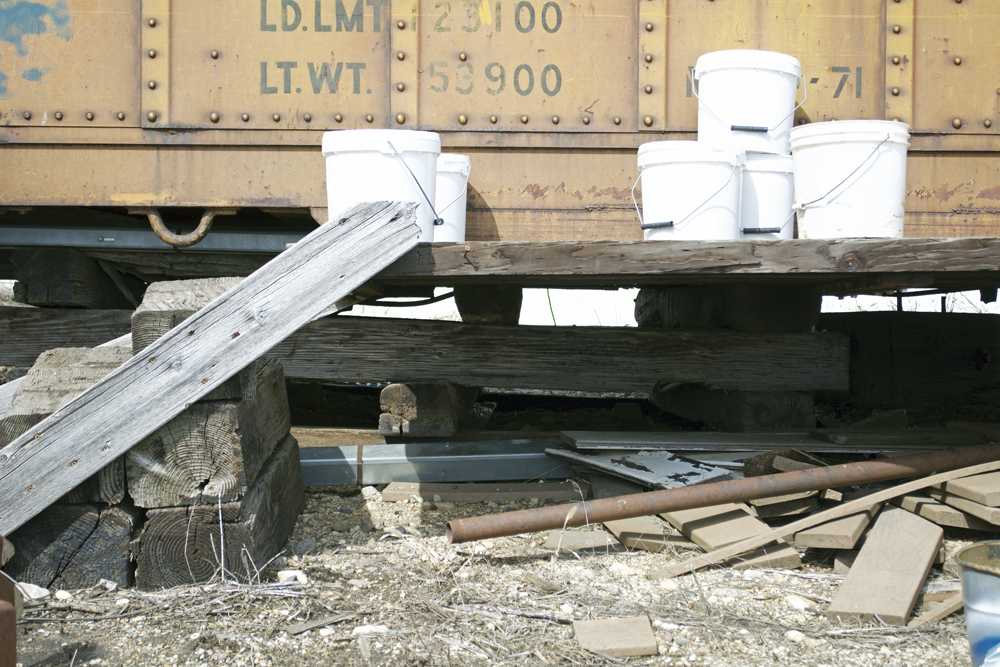
The car's interior is reached via steps and a ramp made upward of shortened railroad ties and bridge walkway planks. A pair of angle brackets bolted to the automobile'due south sill support the walkway spanning the stairs and ramp. The dock, made up of the same materials, is at the same height as the car's flooring.
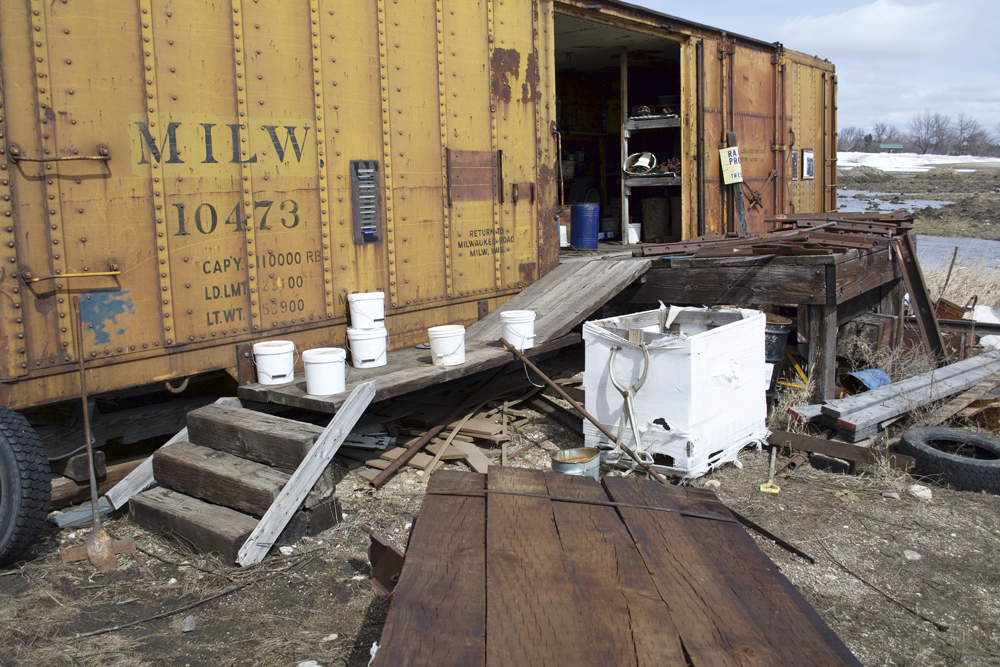
Detailing the boxcar storage scene
The terminal pace is to detail the auto's interior and the area in front end of information technology. Within the automobile are storage units. The racks are built from dimensional lumber; the shelves are freight car crossover platforms. The shelves are lined with rail anchors, jugs of oil and coolant, and other miscellaneous items used past maintenance-of-way crews.
On the dock are joint bars and kegs of track spikes. Ground level appears to exist a catchall for everything else, like tie tongs, rails bolts, an old 55-gallon pulsate, a discarded tire, spike keg lids, and offcut pieces of track. Page through the "Super Detailing Parts" section of the Walthers Model Railroad Reference book, get like details to what you encounter hither, and get started on your model of a boxcar storage scene!
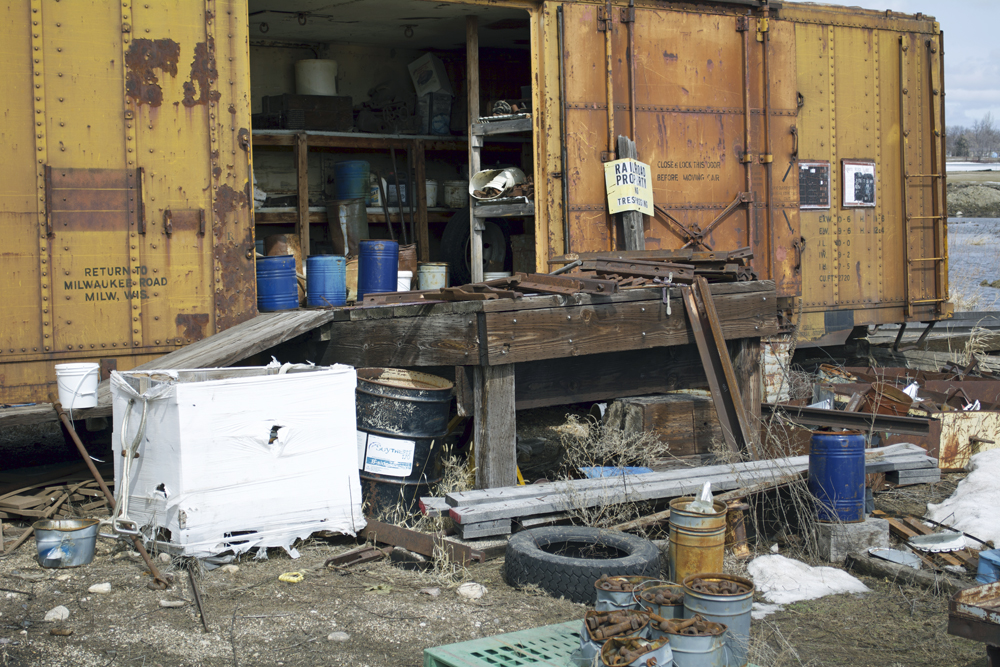
Source: https://www.trains.com/mrr/how-to/prototype-railroads/model-a-boxcar-storage-scene/